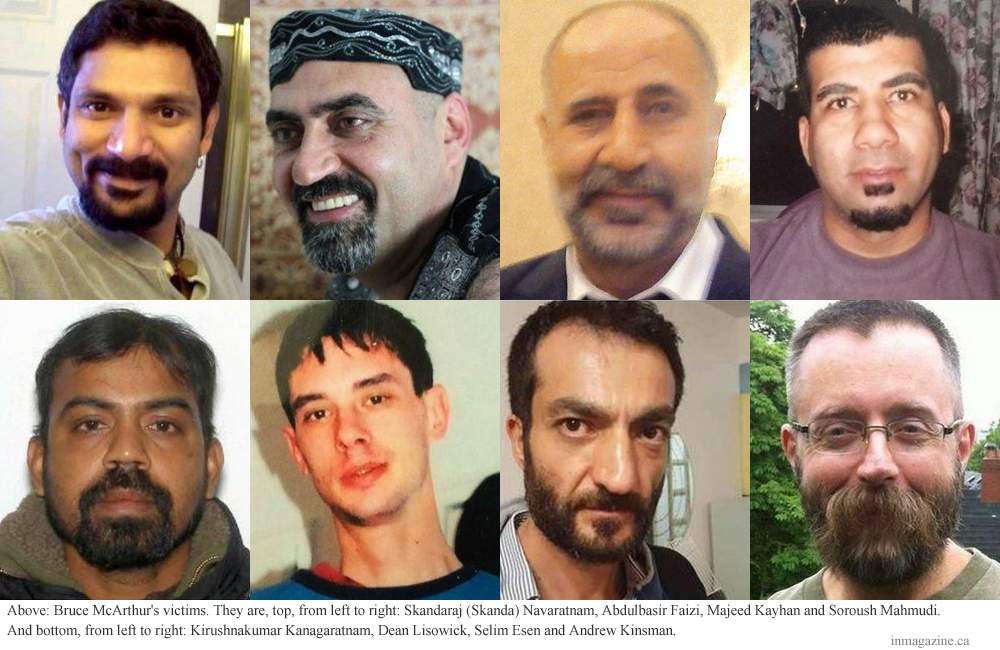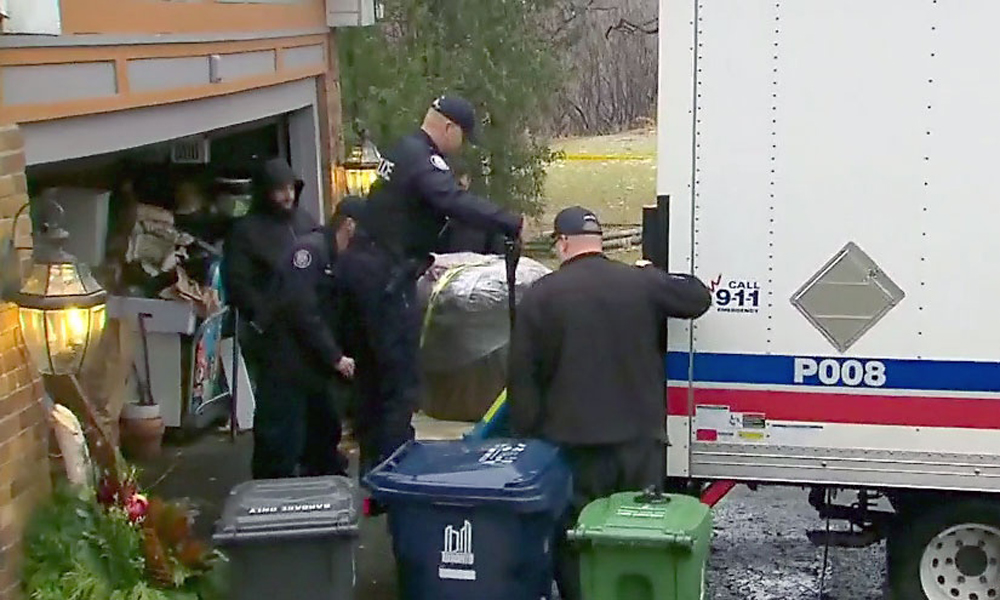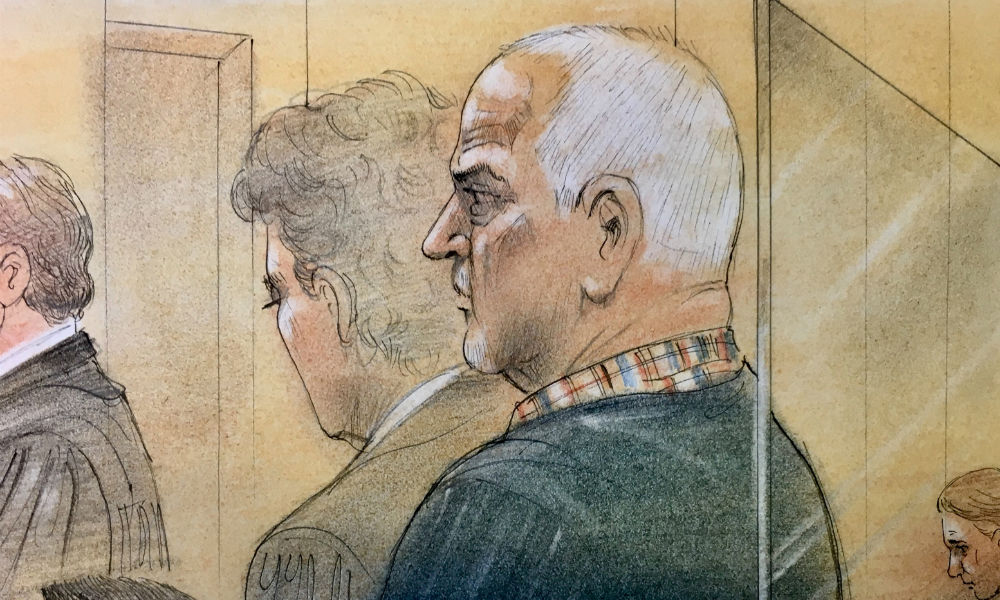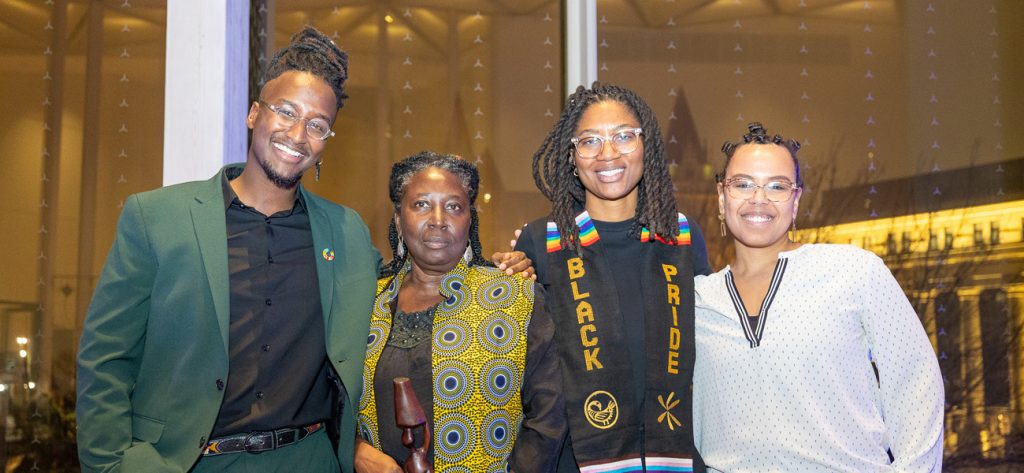For at least seven years, he went undetected…
On February 8th, 2019, 67-year-old Bruce McArthur officially became a convicted serial killer after pleading guilty to the first degree murders of eight men in Toronto. Some of the men were Middle Eastern immigrants, some had known McArthur personally for years, and all eight were a part of Toronto’s tight-knit LGBTQ community.
The eight men who fell victim to McArthur were: Skandaraj Navaratnam, 40, Abdulbasir Faizi, 42, Majeed Kayhan, 58, Soroush Mahmudi, 50, Kirushnakumar Kanagaratnam, 37, Dean Lisowick, 47, Selim Esen, 44, and Andrew Kinsman, 49. They are all missed by their family, friends and the LGBTQ community they were a part of.

Although he committed his first (known) murder in 2010, it wasn’t until 2017 that the TPS started connecting a number of disappearances and looking at McArthur as a potential suspect. Once they started surveilling him, it wasn’t long before he was arrested—which shows how little effort McArthur was actually putting into not getting caught. McArthur was arrested on January 18, 2018, interrupting what looked like was about to be his ninth murder. He plead guilty just over a year later.
By pleading guilty, McArthur avoided a lengthy trial that would have put the family and friends of his victims through daily heartbreak. In order for sentencing to take place, the Crown and the defence must agree on a “statement of facts” to be presented in court so the Judge can decide on an appropriate sentence. This statement of facts revealed details about how and when McArthur murdered his victims and confirmed that the police did have suspicions about a possible serial killer operating in the Gay Village—although they were always tight lipped when questioned about it.
Before reading the statement of facts at McArthur’s sentencing hearing, the Crown said “For years, Toronto’s LGBTQ community believed they were being targeted by a killer. They were right.” McArthur was a recognizable face in the Gay Village around Church and Wellesley for years and even as people associated with him went missing and suspicions grew, it took the police years to zero in on him as a person of interest.
McArthur was sentenced to 25 years without parole eight times over, although the sentences are to be served concurrently so he will be eligible for parole at the age of 91. Although it is possible McArthur committed murder before 2010—and the police are investigating cold cases with that in mind—we may never know for sure. McArthur chose not to make a statement when given the opportunity, and he probably never will.
Many people believe McArthur should have been caught sooner, but it is clear he chose victims he believed wouldn’t be missed. The cops didn’t take the concerns of the LGBTQ community seriously and they even let McArthur get away with previous assaults. Sgt. Paul Gauthier has been charged with neglect of duty and insubordination in connection with a 2016 assault McArthur was accused but never charged of.
According to everything that has been made public about the investigation, this is how McArthur went from a recognizable face in the Village to an accused and now convicted serial killer.
October 2001 – April 2003
In 2001, McArthur (age 50) attacks a man in the victim’s apartment in the Gay Village. McArthur beat the victim with a metal pipe before leaving and going to the police to admit he hurt someone and isn’t sure why he did it. The victim calls 911 himself and is taken to the hospital. In 2003, McArthur pleads guilt to assault with a weapon and assault causing bodily harm. He receives three years probation and is barred from the Gay Village and spending time with “male prostitutes.” He is also ordered to provide a DNA sample.
September 2010
Skandaraj (Skanda) Navaratnam goes missing after leaving Zipperz, a now-closed bar near Church and Carlton. One anonymous source says McArthur dated Navaratnam as far back as 1999 and the two are friends on Facebook. According to the statement of facts, McArthur killed Navaratnam around September 6th, 2010. Jewelry belonging to Navaratnam was later found in McArthur’s apartment.
December 29th, 2010
Abdulbasir Faizi is reported missing by his wife to Peel Regional Police. His car is later found abandoned in the St. Clair Ave East and Mount Pleasant area in Toronto. According to the statement of facts, he was killed on or around the same day he went missing.
October 2012
Majeed Kayhan, an Afghan immigrant, is reported missing by his son in mid October. Friends report that Kayhan had known McArthur previously and may have had a sexual relationship with him. According to the statement of facts, Kayhan was killed around October 18th, 2012.
November 2012 – April 2014
The Toronto police 51 division launch Project Houston, a task force to investigate the disappearances of Navaratnam, Faizi, and Kayhan. The men, who vanished between 2010 and 2012, each had ties to the city’s Gay Village.
The police find evidence that Navaratnam had been murdered, but the investigation doesn’t uncover any answers about what happened to him or the other two men. McArthur is questioned because of his connections with at least two of the men but is considered a witness and not a person of interest. Project Houston ends in April 2014 without resolution.
August 2015
Soroush Mahmudi, an immigrant from Iran is reported missing by his wife. According to the statement of facts, he is killed on or around August 15th. His DNA was later found on a coat taken from McArthur’s van.
January 2016
According to the statement of facts, Kirushnakumar Kanagaratnam (McArthur’s youngest victim at 37) was killed in early 2016. He was a Sri Lankan refugee who arrived in B.C. in 2010 on a dilapidated cargo vessel after a six-week journey from Thailand. He was never reported missing, most likely because of his unstable immigration status, but his family had been actively searching for him via Facebook and other online channels.
June 20th, 2016
McArthur is arrested after a man calls 911 to report that McArthur attempted to strangle him during an otherwise consensual encounter. McArthur turns himself in and is questioned but let go without charges.
There is now an open investigation into why detectives released McArthur without charging him.
April 2016
According to the statement of facts, Dean Lisowick was killed around April 23, 2016. He lived at the Scott Mission in Toronto on and off and was never reported missing. Police later found jewelry identified as belonging to Lisowick in McArthur’s apartment.
April 2017
Selim Esen, a Turkish immigrant is reported missing on April 14th and was last seen around Yonge and Bloor. According to his brothers, Esen came to Canada in 2013 to marry his boyfriend and had University degrees in sociology and philosophy. He was struggling with unemployment and drug addiction when he went missing.
According to the statement of facts, Esen was killed around April 16th. His notebook was later found in McArthur’s apartment.
June 2017
Andrew Kinsman is reported missing on June 26th, a day after Toronto’s Pride Parade. He was an LGBTQ activist and former bartender with lots of friends who noticed his absence immediately. Kinsman had a 17-year-old cat he loved and worked as a superintendent. His sister Patricia told Global News “He would never leave his cat. He would never shirk his duties. He was a superintendent and he didn’t take the garbage out on Wednesday so I knew at that point.”
According to witnesses and investigators, Kinsman and McArthur had an ongoing sexual relationship and had known each other for years. Investigators later revealed that they found the name “Bruce” in Kinsman’s calendar, which in addition to video surveillance of him getting into a red van before he was reported missing, helped them zero in on McArthur as a suspect.
August 2017
Police launch Project Prism, a probe into the disappearances of Esen and Kinsman. Information from Project Houston is shared.
September – December 2017
McArthur becomes a person of interest in Kinsman’s disappearance and the police begin surveillance of his vehicle and movements. In September, police seize a Dodge Caravan McArthur sold to an auto parts shop and they find Kinsman’s blood inside making McArthur a suspect in Kinsman’s murder.
In December, the police obtain a warrant to covertly search McArthur’s apartment. They clone his computer, copy and examine data, hard drives, memory sticks and more. It is later revealed in the statement of facts that McArthur had photos of a number of the missing men. He had staged their bodies, dressing some of them up in a fur coat before taking photos.
During a press conference on December 8th, 2017, Toronto police chief Mark Saunders downplays the suggestion that there is a serial killer operating in the Gay Village. A police spokesperson also says there is “no evidence—let me repeat, no evidence” linking the disappearances.
January 18, 2018
While under surveillance, McArthur comes home with a young man and they enter his apartment together. Believing the man (who is called “John” at all hearings) could be in danger, the police intervene. John is found tied to the bed but unharmed and McArthur is arrested. Not long after he is officially charged with the murders of Kinsman and Esen.

January 29, 2018
McArthur is charged with three more murders: Kayhan, Mahmudi and Lisowick. Detective Hank Idsinga reveals that the police found dismembered, skeletal remains of three unidentified people buried in planters at a Leaside house where McArthur worked as a landscaper.
February 8, 2018
Toronto police announce that they’ve found the remains of at least six people at 53 Mallory Crescent. The remains of Andrew Kinsman are identified through fingerprint evidence.
February 23, 2018
McArthur is charged with Navaratnam’s murder. His remains were found inside the planters and identified using dental records. Mahmudi’s remains are also identified using dental records.
March 5, 2018
The Toronto police release a photo of a deceased, unidentified man who they suspect is McArthur’s seventh victim. Police have now found the remains of seven different people and are still in the process of testing and working to identify four of them.
Later this month, the Toronto police board commission an external review of how the Toronto police handle missing-persons cases.
April 2018
Faizi’s remains are identified and McArthur is charged with a seventh count of first degree murder. The police also identify the man in the photograph as Kirushnakumar Kanagaratnam and McArthur is charged with his murder as well.
May 2018
Police complete their four-month forensic investigation of McArthur’s apartment in Thorncliffe Park. They collected 1800 exhibits and took over 18,000 photos making the probe the largest forensic investigation in Toronto history.
July 2018
Police resume excavation behind 53 Mallory Crescent and find the remains of Kayhan, the only victim that wasn’t buried in planters. At a press conference, Detective Idsinga says there is no evidence pointing to more victims.
October 2018
McArthur appears in court to waive his preliminary hearing which sends his case directly to trial. The remains of the victims are released back to their families to allow for funerals and memorial services to be organized.
January 28, 2019
McArthur appears in court to plead guilt to eight counts of first-degree murder. In the statement of facts, McArthur admits that he intended and caused the deaths of all eight men. Six of the deaths occurred during a sexual assault or while the victim was unlawfully confined. He kept some of the victims’ belongings as souvenirs, staged some of their bodies in order to take photos and dismembered them in order to conceal their remains in planters where he worked as a landscaper.

February 4-5, 2019
The Crown lawyer Michael Cantlon and McArthur’s defence lawyer James Miglin present their sentencing submissions. Friends and family of the victims and members of the LGBTQ community read their victim impact statements detailing how their lives have been changed by the loss of loved ones. The Crown requests that Justice McMahon sentence McArthur to consecutive life sentences with no chance of parole for 50 years.
Miglin requests concurrent sentences with no chance of parole for 25 years, which is the shortest possible sentence for first degree murder in Canada. He cites McArthur’s age as one of the reasons for the shorter sentence.
Justice McMahon asks McArthur if he would like to say anything but he declines.
February 8, 2019
Justice McMahon sentences McArthur to eight life sentences to be served concurrently with no parole eligibility for 25 years. He emphasizes McArthur’s age and the fact that he plead guilty and spared everyone the process and expense of a trial as reasons behind his decision. He also made it clear that given his crimes the chances are “very remote at best” he will ever be paroled.
The questions surrounding whether the police did their jobs effectively in investigating missing persons cases in the years McArthur is now known to have been active have prompted an official review. Justice Gloria Epstein retired from her post as a judge in order to conduct the review, which is due to be released in April 2020. Originally, McArthur’s case was to be left out of the review in order to avoid it interfering with his right to a fair trial, but now that McArthur has plead guilty and been sentenced, that is no longer a concern.
In addition to the McArthur case, the review is meant to look into whether missing persons investigations are routinely “tainted by systemic bias or discrimination”. Considering the police have been highly criticized for the way they handled the disappearances linked to McArthur, the case is an important one for identifying issues and building a strategy for the future.





POST A COMMENT